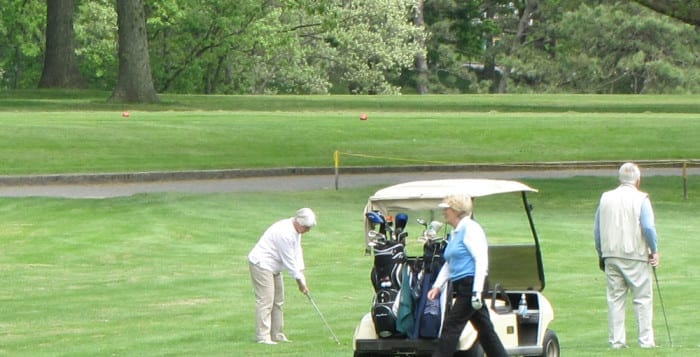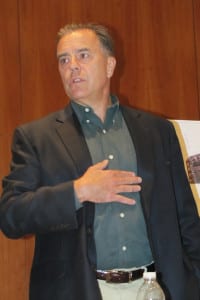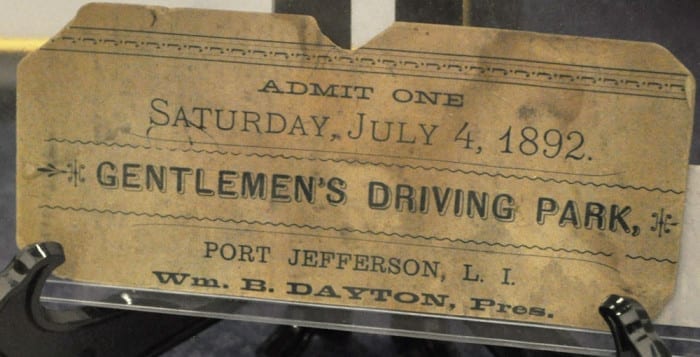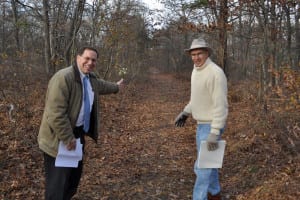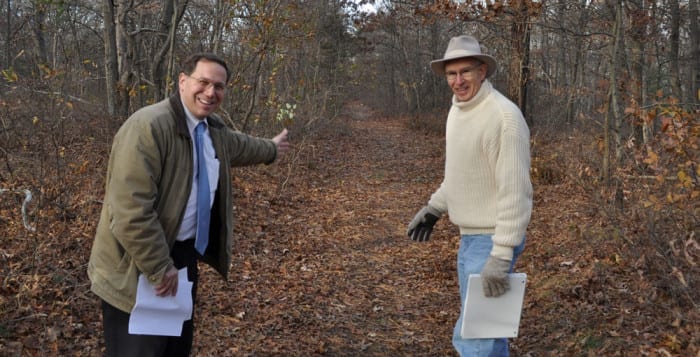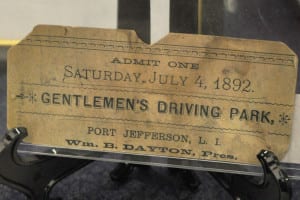Despite numerous objections from residents, local civic associations and the community’s own councilwoman, the Town of Brookhaven has paved the way for a 200-unit retirement community at the Heatherwood Golf Club in Terryville.
Councilman Dan Panico (R-Manorville) sponsored the resolution for a zone change from A Residence 5 to Planned Retirement Community for the property, which is located at Arrowhead Lane and Route 347 and falls in both the Comsewogue and Three Village school districts. The town board approved it in a 4-3 vote, with Councilwomen Valerie Cartright (D-Port Jefferson Station) and Connie Kepert (D-Middle Island) and Supervisor Ed Romaine dissenting.
The planning board still must approve the project’s site plan before the project can move forward.
According to the site plan application, about 25 acres of the property would be developed into the 55-and-over community, while about 45 acres would remain open, leaving a nine-hole golf course.
Since the property would be developed at an increased density, owner Doug Partrick in exchange would donate a 40-acre lot he owns in the Manorville Farm Protection Area — in Panico’s district — for open space.
While the zone change public hearing was held on Tuesday, the project had been discussed for months at Port Jefferson Station/Terryville Civic Association meetings, and that group, along with the neighboring Civic Association of the Setaukets and Stony Brook, came out strongly against it.
However, the Town of Brookhaven Planning Department supported the project — Planning Commissioner Tullio Bertoli said the proposal is compatible with existing development in the area and fits in with the town’s smart growth efforts, as it is located along a commercial corridor.
Residents and civic leaders who attended the public hearing expressed concerns about traffic and losing open space in their community. In addition, many were displeased to see the development proposed for the golf course, as the community is preparing to redevelop and revitalize the Route 112 corridor, on another side of town.
“[It’s] dismaying to see a town planning commissioner come before you and say this is a location that meets all criteria,” Bob de Zafra, of the Setaukets and Stony Brook civic, said at the public hearing. “It does not.”
He also criticized Panico for bringing forth the resolution.
De Zafra asked Panico and new Councilman Neil Foley (R-Blue Point) to recuse themselves from the vote, as the officials received campaign contributions from a company under the umbrella of Partrick’s Heatherwood Communities, the retirement community developer.
According to campaign financial disclosure records, Friends of Dan Panico received a $500 contribution from Heatherwood House at Coram LLC in September 2013, while Friends of Neil Foley received a $1,000 contribution in October 2014.
“There’s nothing illegal in that,” de Zafra said. “There’s nothing dishonest in that and I certainly don’t mean to imply that, nor am I due a lecture about it.”
Panico, who said he brought forth the zone change resolution because it was in the best interest of the whole town, interjected during de Zafra’s comments and said, “Why would you bring it up?”
Frank Gibbons, a board member of the Port Jefferson Station/Terryville Civic Association, said he was concerned about the development’s impact on traffic.
“There are good arguments on both sides of this question, but I think that when we look at the best thing for the entire township, Mr. Panico, … how about taking care of Terryville, Port Jefferson Station and South Setauket,” Gibbons said.
The town board placed conditions on its zone change approval, including that Partrick must make the land donation, remove a billboard at the golf course, construct a sidewalk on the east side of Arrowhead Lane and complete a new traffic study for the Terryville site.
Heatherwood’s attorney, David Sloane, of Certilman Balin Adler & Hyman LLP, spoke about the positives of the project, including a decrease in the use of pesticides and more property taxes to the school districts without an influx of students.
“This proposal is the least intensive use that could be developed on this site,” he said.


